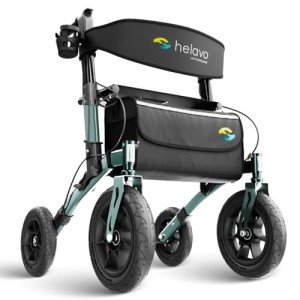The Essential Guide to Handicapped Walkers: Enhancing Mobility for Individuals with Disabilities
Walking aids play a critical role in boosting the quality of life for people with handicaps. Among these, handicapped walkers, likewise called walkers or rollators, are vital tools that help users in keeping mobility, self-reliance, and safety. This blog post aims to offer an in-depth overview of handicapped walkers, discussing their types, benefits, and essential considerations for users when picking a walker that best suits their needs.
Table of Contents
- What Is a Handicapped Walker?
- Kinds Of Handicapped Walkers
- Standard Walkers
- Two-Wheeled Walkers
- Four-Wheeled Walkers
- Features to Consider When Selecting a Walker
- Advantages of Using Handicapped Walkers
- FAQs
- Conclusion
What Is a Handicapped Walker?
A handicapped walker is a mobility aid designed to help individuals who have trouble walking or maintaining balance due to impairments, injuries, or aging. It supplies support, stability, and security, helping users browse their environment with higher self-confidence and self-reliance. Handicapped walkers are available in numerous designs to fit various mobility difficulties, making them flexible tools for many people.
Kinds Of Handicapped Walkers
Understanding the different kinds of walkers is crucial for choosing the right one. Below is a summary of the primary kinds of handicapped walkers:
| Type | Description | Suitable For |
|---|---|---|
| Requirement Walkers | Basic frame without any wheels, requiring the user to raise it to move. | Individuals with stable balance. |
| Two-Wheeled Walkers | A lightweight walker geared up with 2 front wheels for much easier movement. | Users requiring more mobility support. |
| Four-Wheeled Walkers | A more advanced model with four wheels, handlebars, and frequently a seat. | Those needing optimum support and rest choices. |
1. Requirement Walkers
Requirement walkers, the a lot of standard version, are constructed as a durable frame. Users raise the walker and place it forward, enabling steady motion. This type of walker is perfect for individuals with limited mobility however who maintain great balance.
2. Two-Wheeled Walkers
These walkers integrate two front wheels, significantly improving maneuverability compared to standard walkers. Users can push the walker instead of raising it, making it simpler to navigate.
3. Four-Wheeled Walkers
Also understood as rollators, four-wheeled walkers featured wheels on all four legs, making them easy to push. Lots of models likewise include a comfortable seat and backrest, enabling users to take breaks during longer strolls or trips.
Features to Consider When Selecting a Walker
Before buying a handicapped walker, it's important to examine specific features that might enhance the user experience and security. Here are some vital considerations:
| Feature | Description |
|---|---|
| Weight Capacity | Guarantee the walker supports the user's weight. |
| Height Adjustability | Try to find adjustable handlebars for a correct fit. |
| Wheels Quality | Analyze if the wheels are robust for different terrains. |
| Brake System | Recognize if it has a reliable braking system for security. |
| Storage Options | Consider if it has a basket or bag for individual items. |
Benefits of Using Handicapped Walkers
The advantages of utilizing handicapped walkers extend beyond mobility, supplying psychological and physical benefits:
- Increased Independence: Walkers allow users to walk around without relying excessively on caretakers or member of the family.
- Improved Safety: With boosted stability, walkers significantly decrease the danger of falls, contributing to a more secure living environment.
- Improved Confidence: Users frequently report feeling more secure and positive when using a walker, motivating them to engage more in social activities.
- Health Benefits: Regular usage of a walker can promote exercise, leading to much better cardiovascular health, improved muscle tone, and general wellness.
FAQs
1. How do I know which kind of walker is best for me?
Selecting the best walker depends upon your physical abilities and mobility requirements. Consulting with a health care professional or occupational therapist can offer customized suggestions based on your particular health scenario.
2. How should I keep my walker?
Routinely check your walker for wear and tear, mainly concentrating on the wheels and brakes. Wipe down surface areas with a wet cloth to keep it clean and store it in a dry place when not in usage.
3. Can I use a walker on irregular surfaces?
While some walkers are much better suited for uneven surfaces than others, care is encouraged. It might be helpful to choose a walker with bigger wheels for much better stability on such surfaces.
4. Are there 4-Wheel Walker designed specifically for outdoor use?
Yes, numerous four-wheeled walkers are specifically created for outdoor usage, including larger wheels and more robust construction to manage different surfaces.
5. Do walkers been available in various colors or styles?
Yes, different styles, colors, and styles are available to accommodate personal choices while still fulfilling functional requirements.
Handicapped walkers are transformative aids that can significantly enhance the quality of life for individuals facing mobility obstacles. By comprehending the types of walkers, their features, and the benefits they offer, users can make educated choices that line up with their personal mobility requirements. As technology and design develop, the future of handicapped walkers promises even greater assistance and comfort, encouraging independence and an active lifestyle for all.

